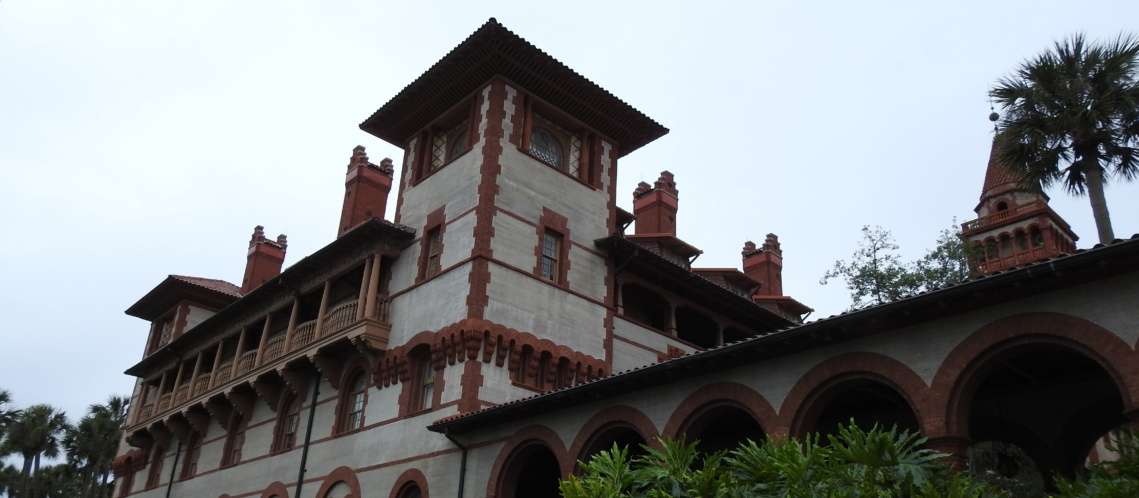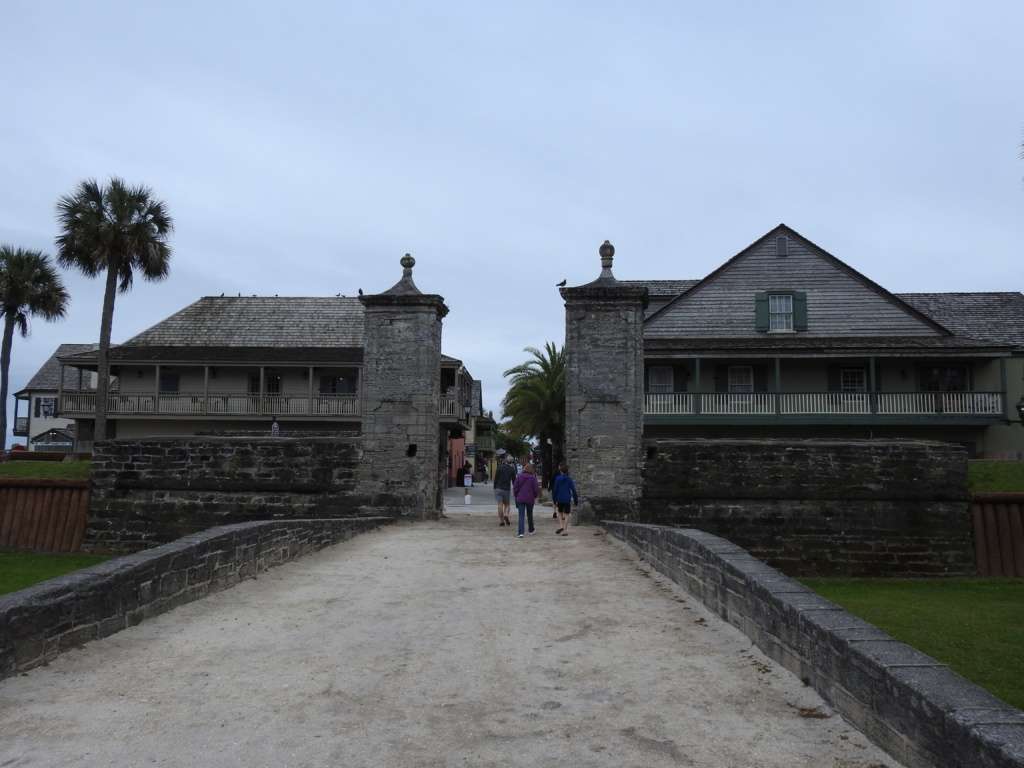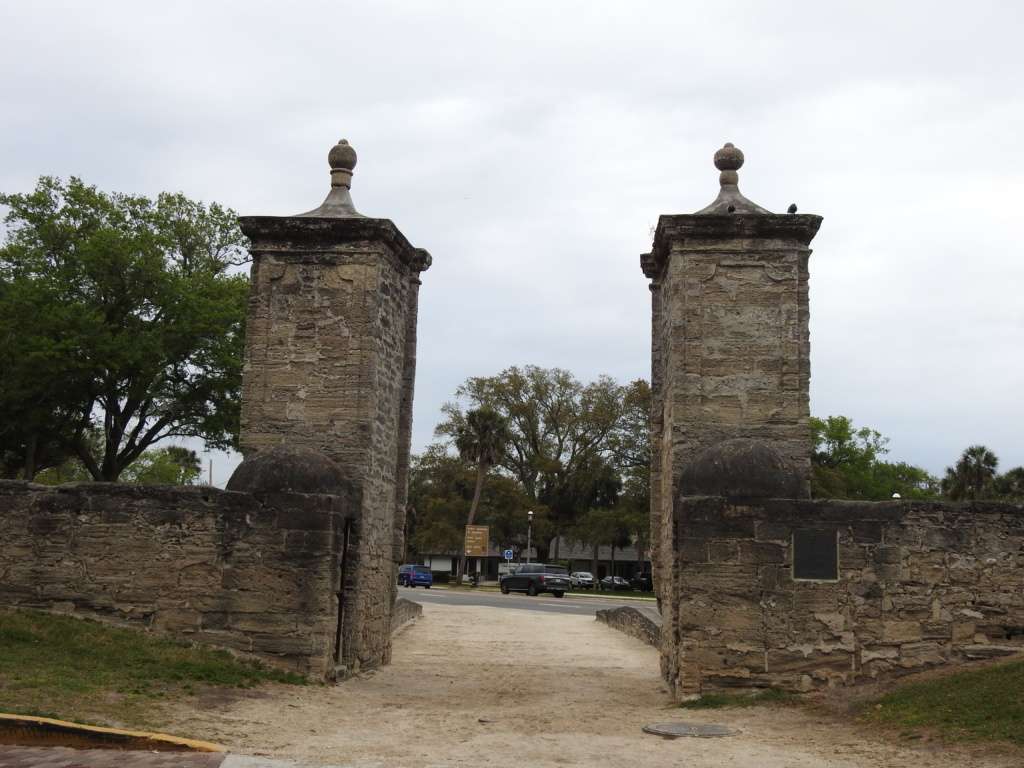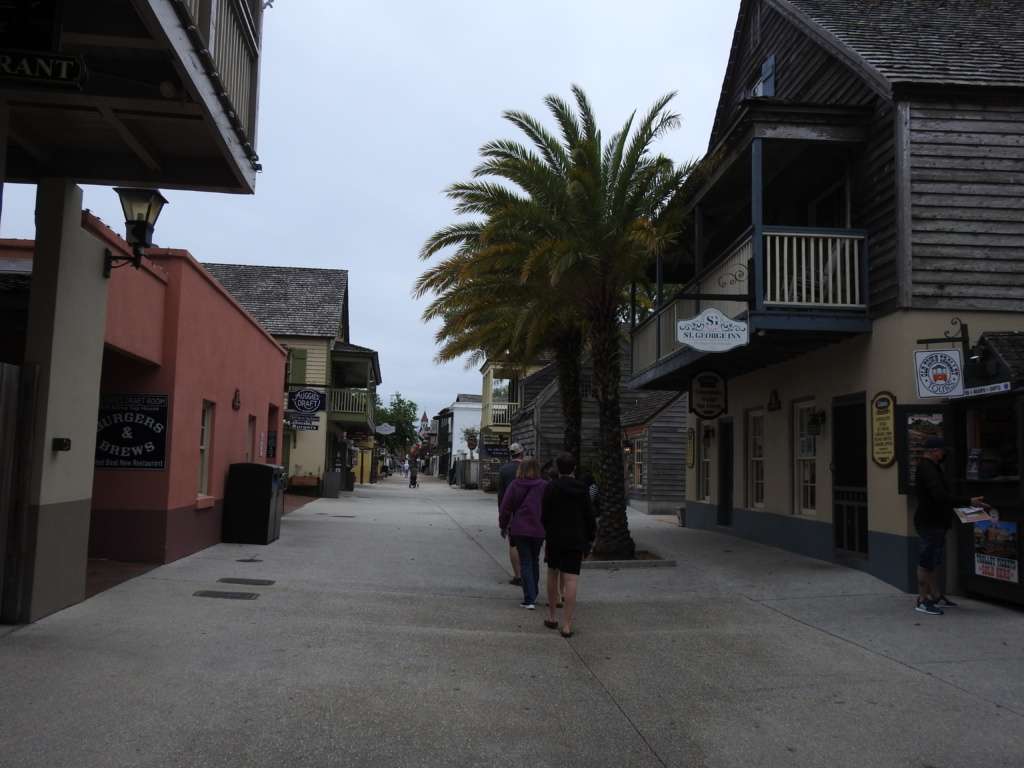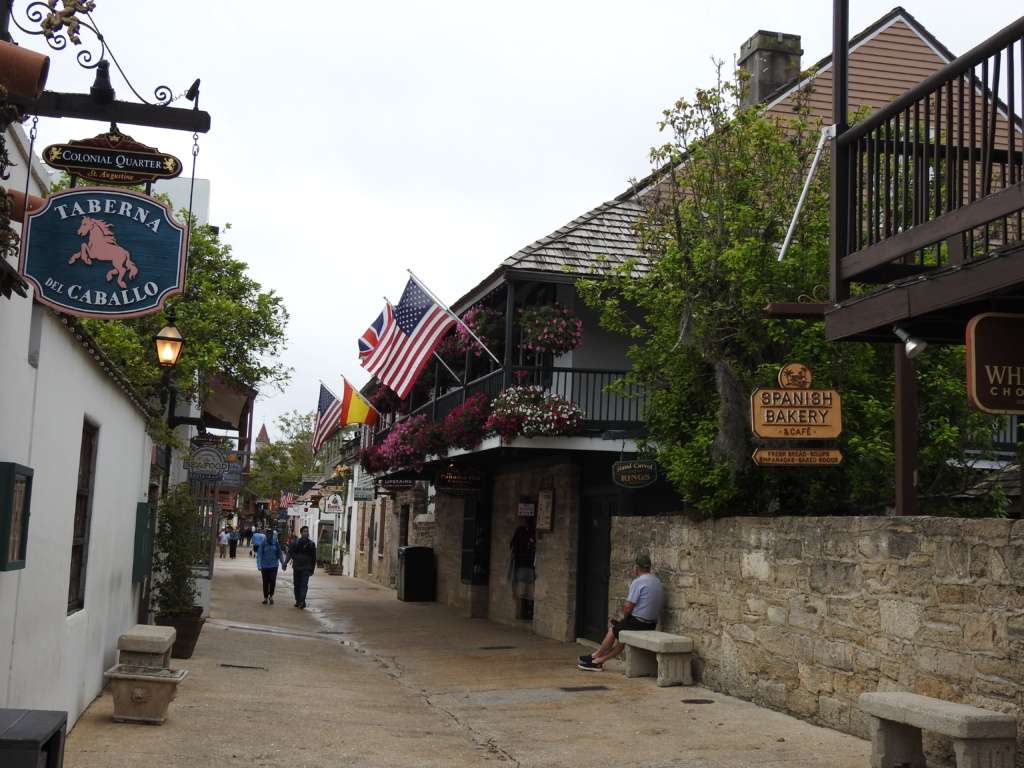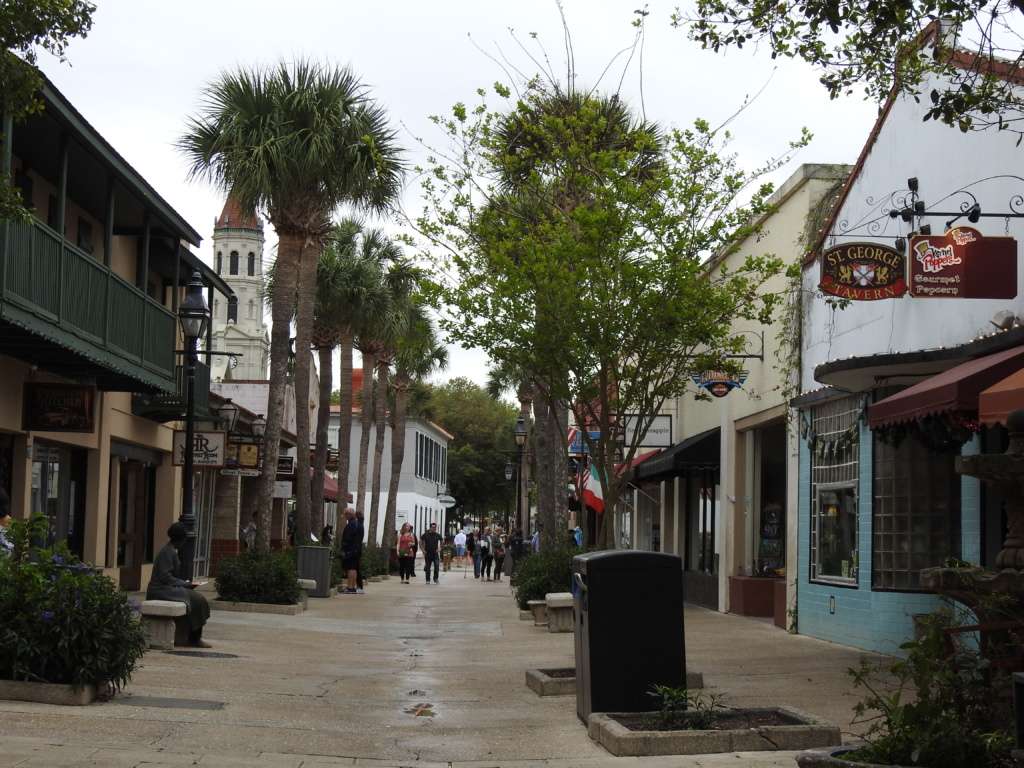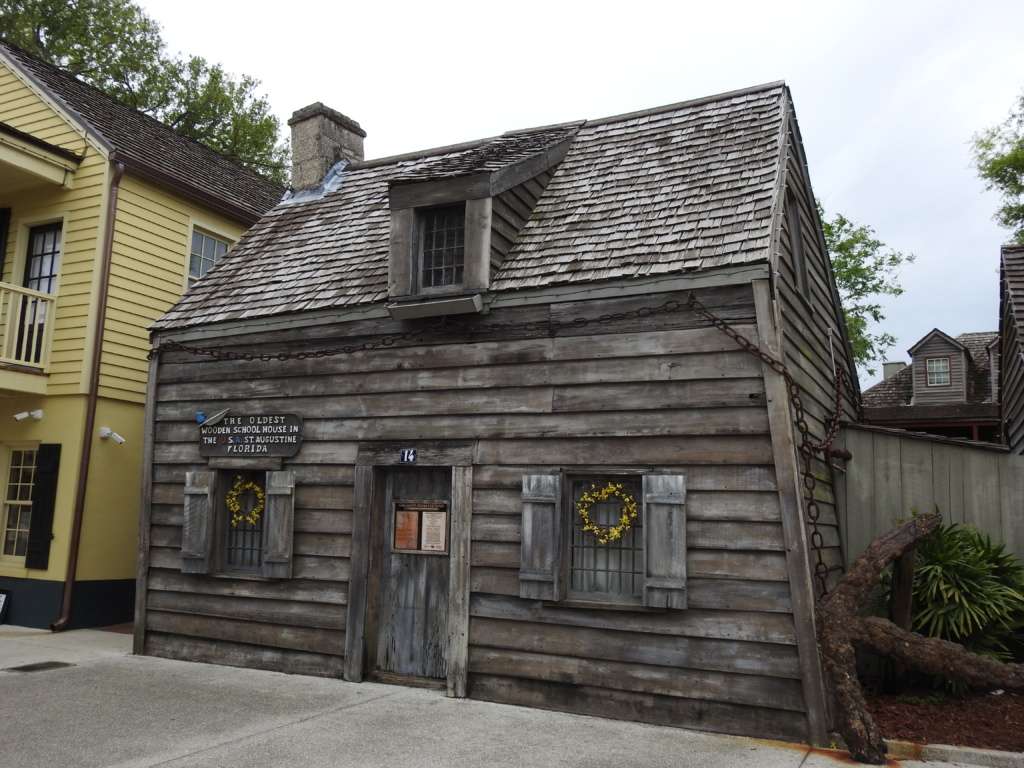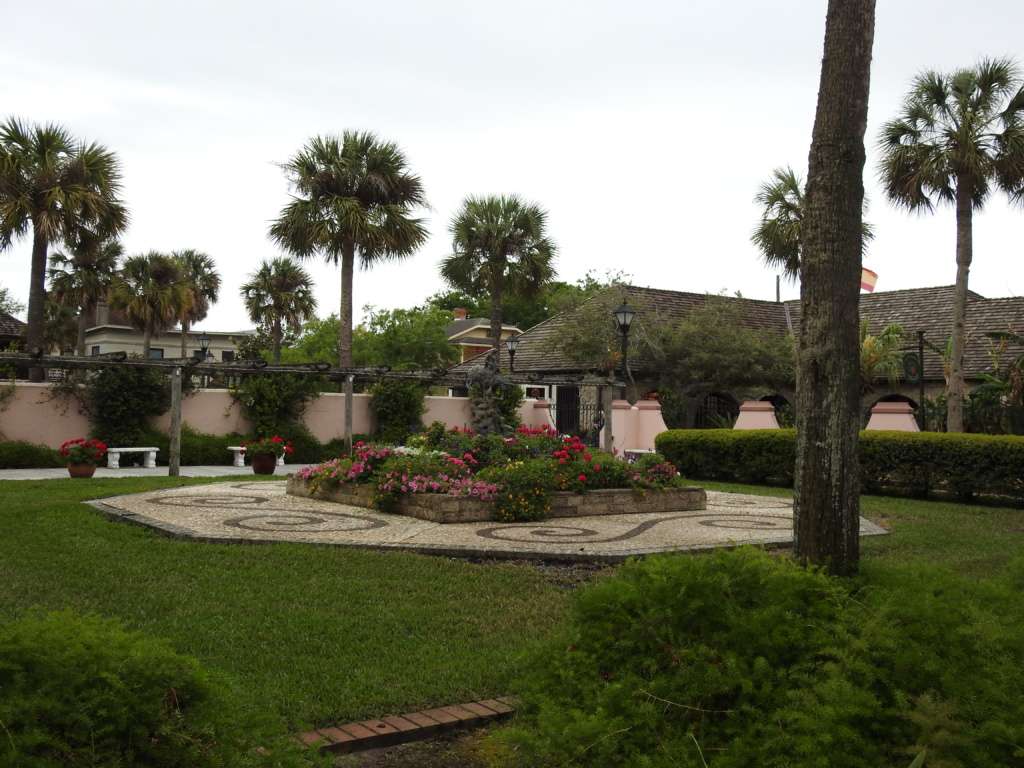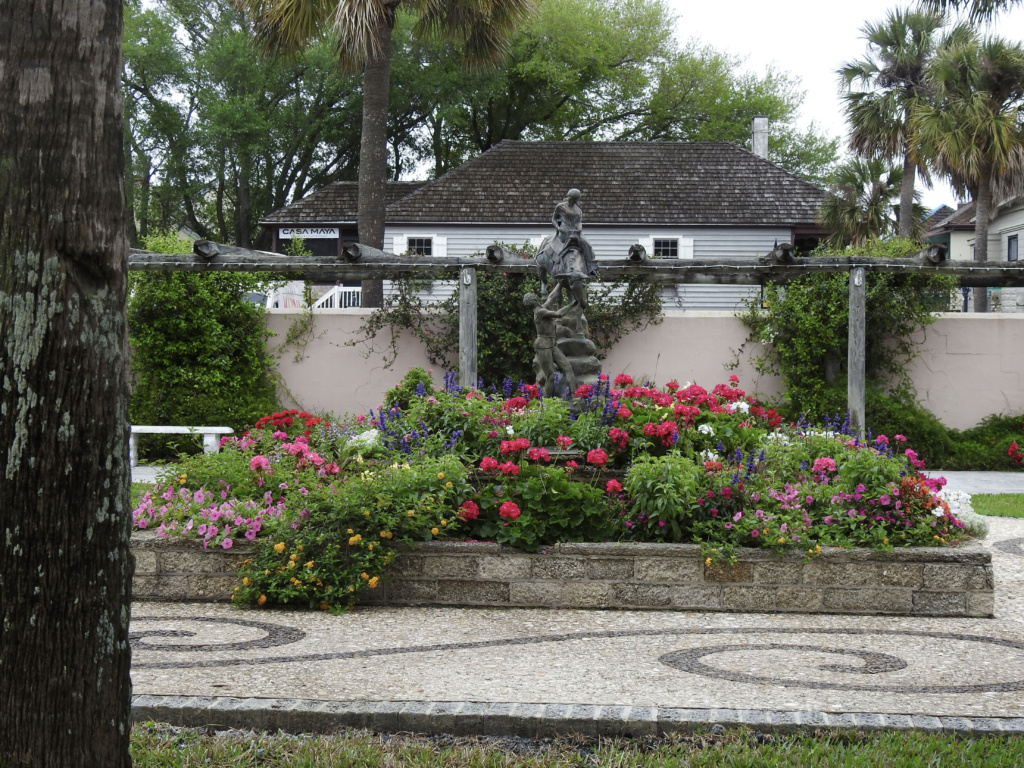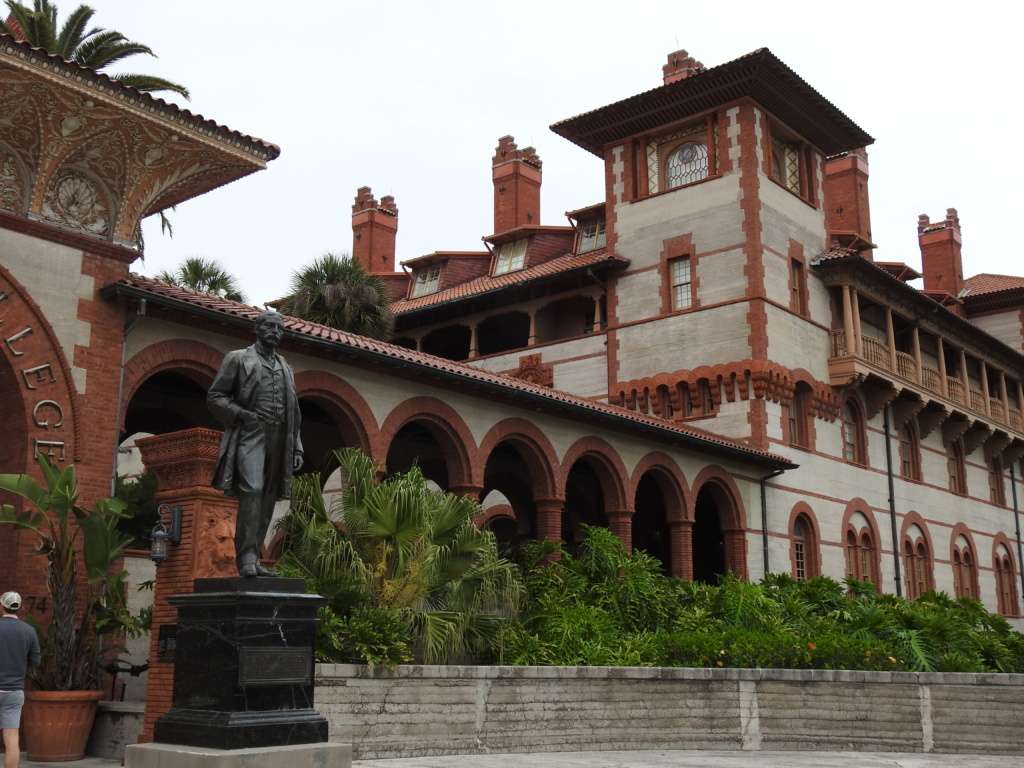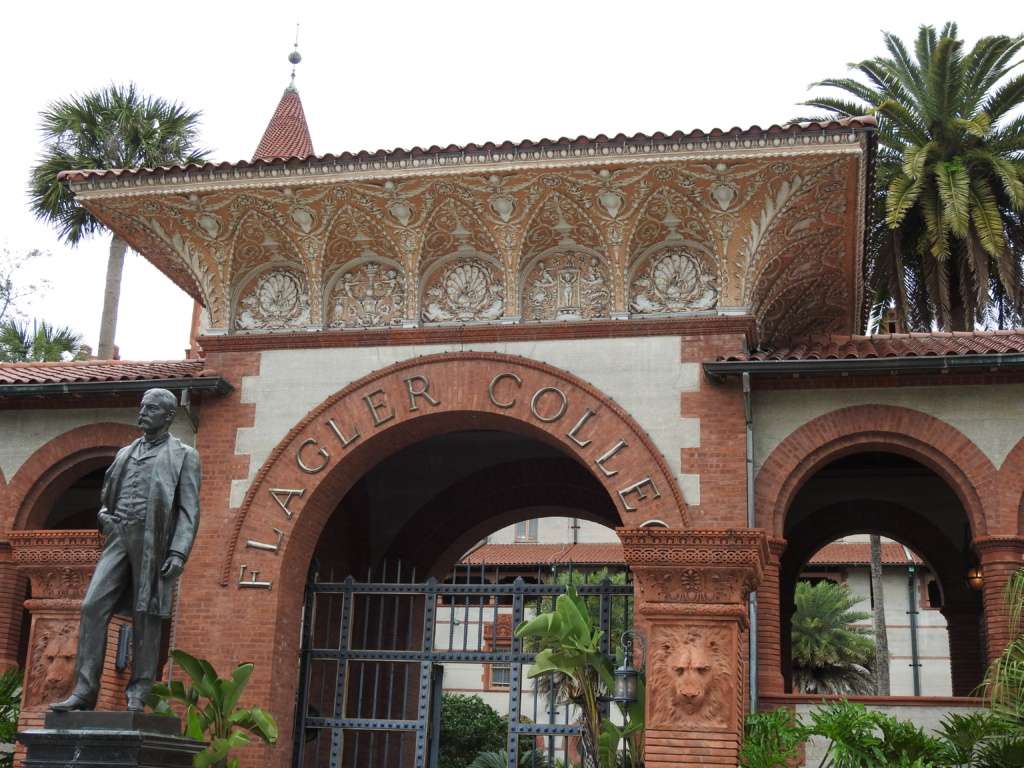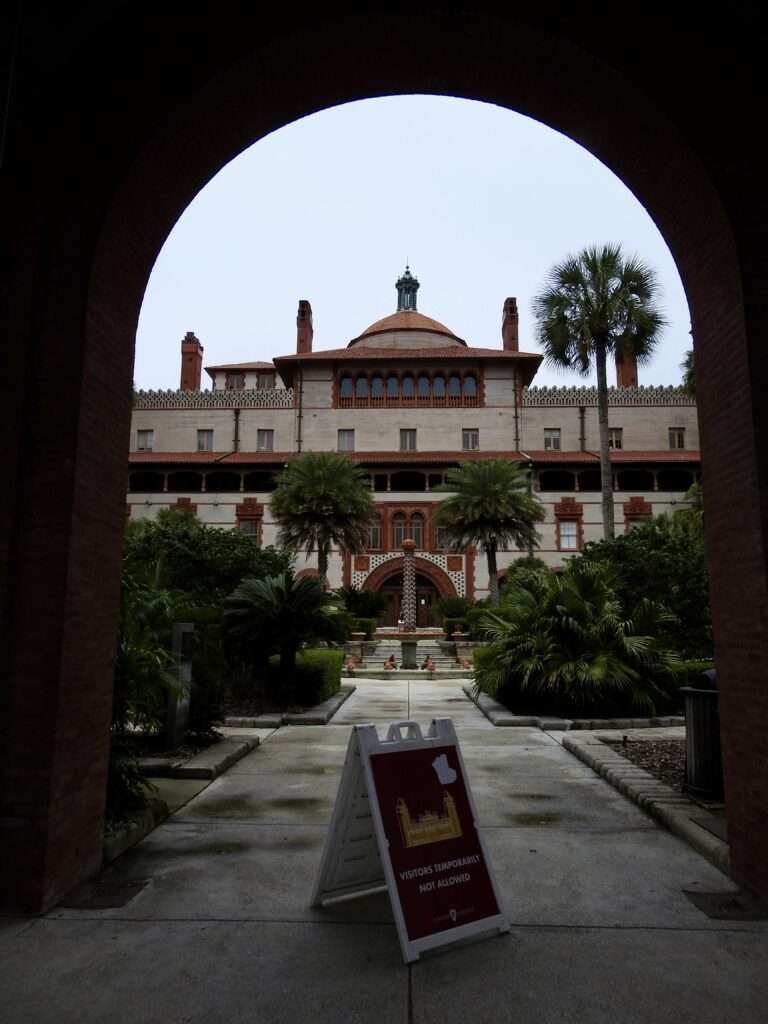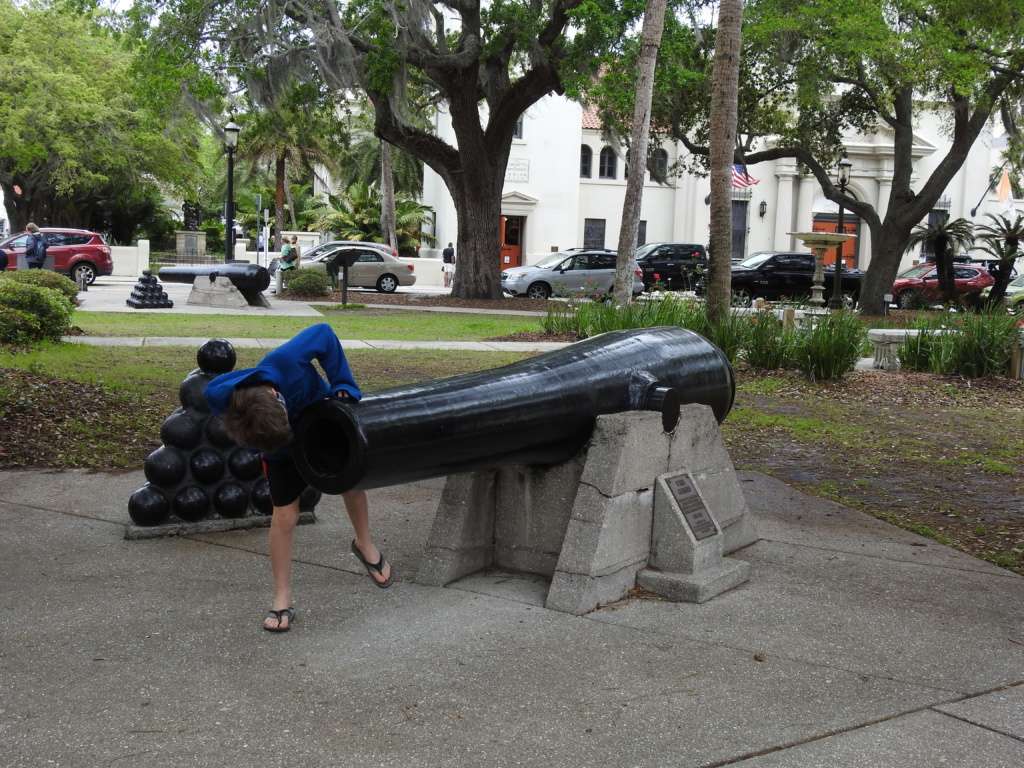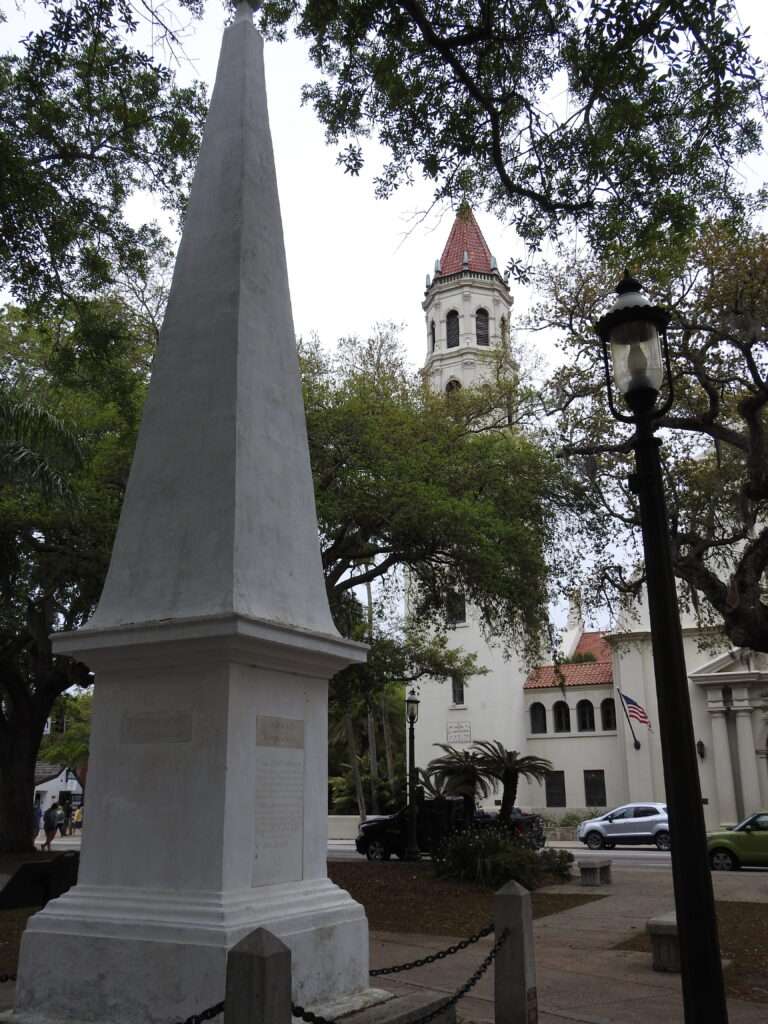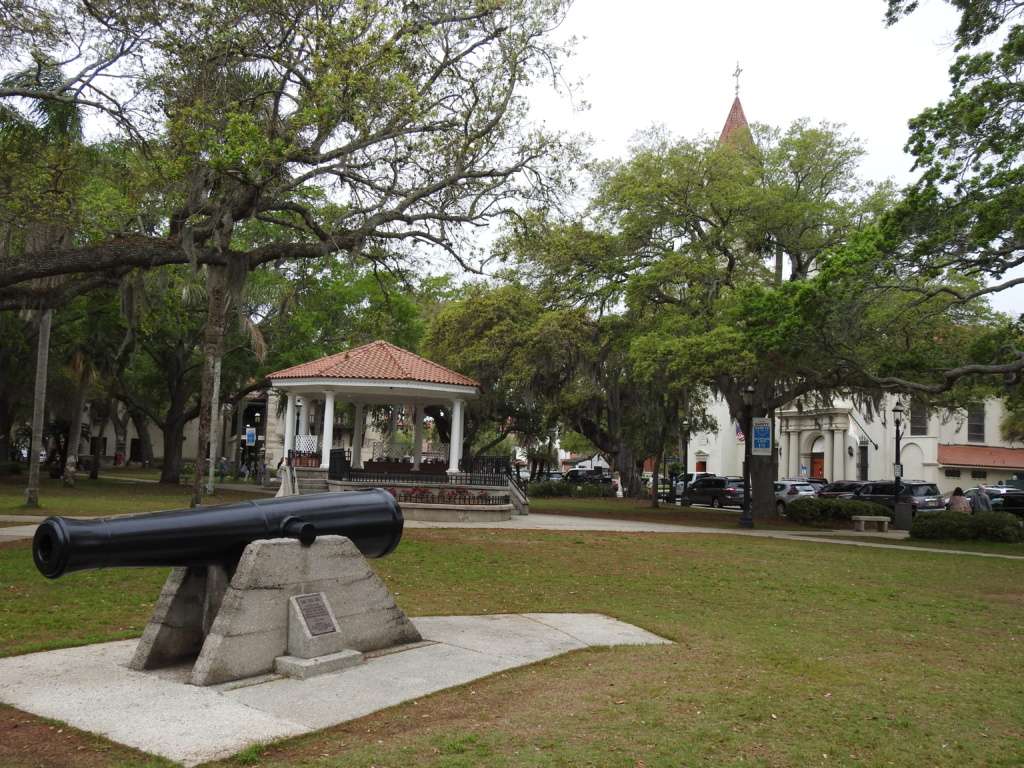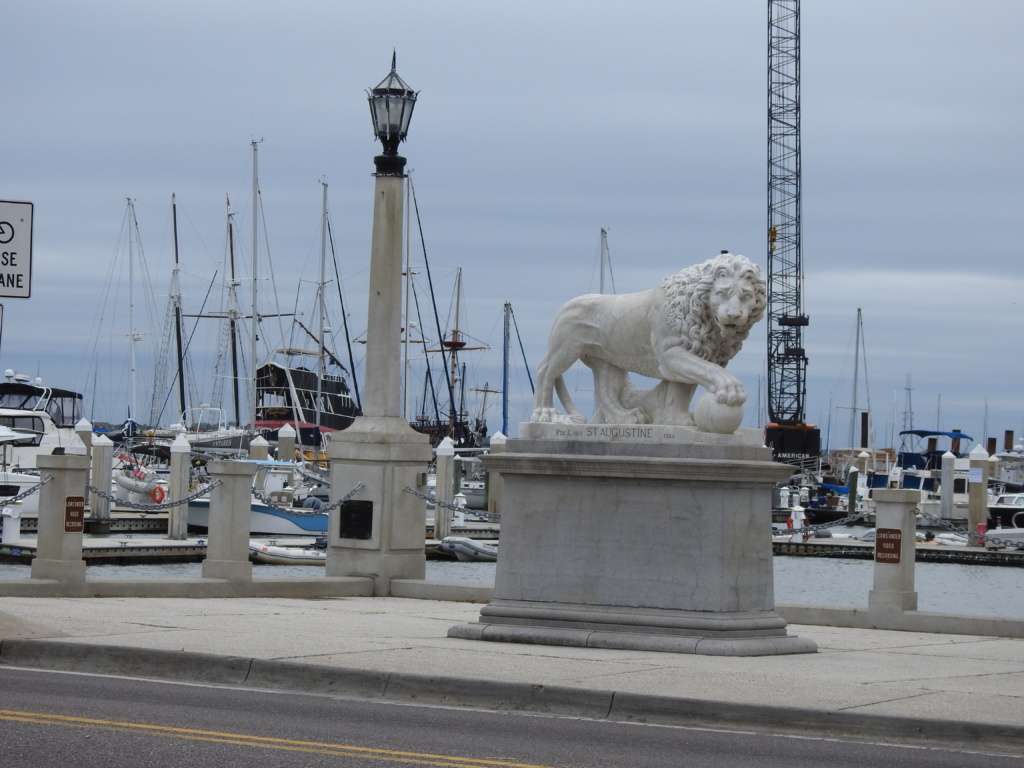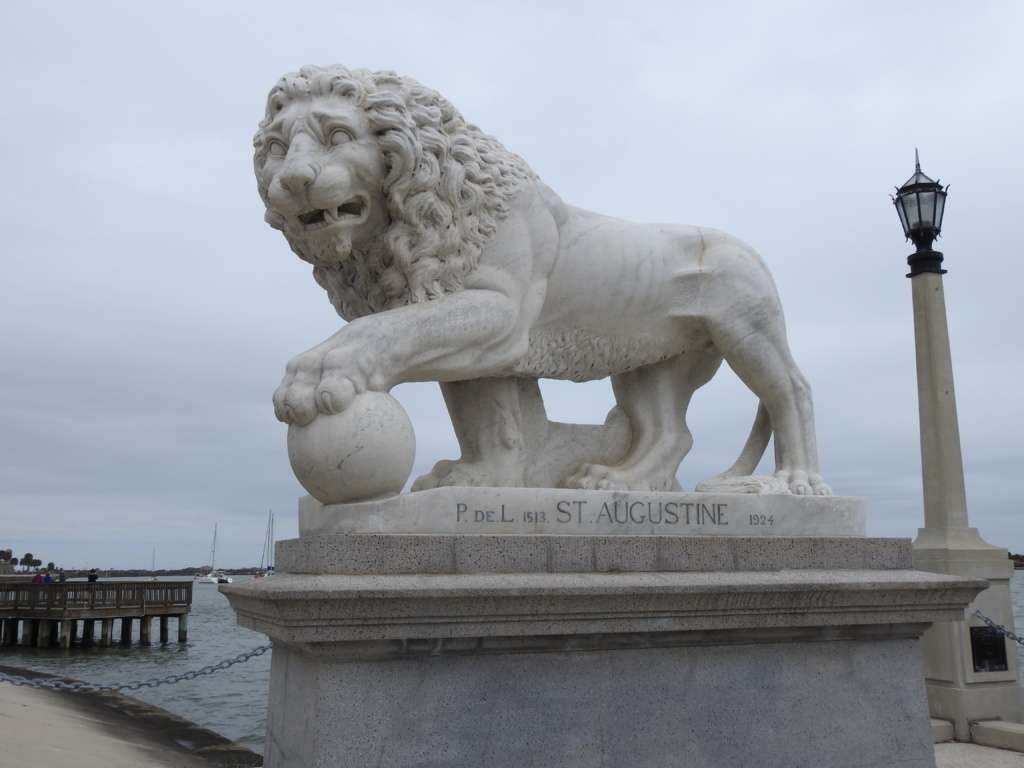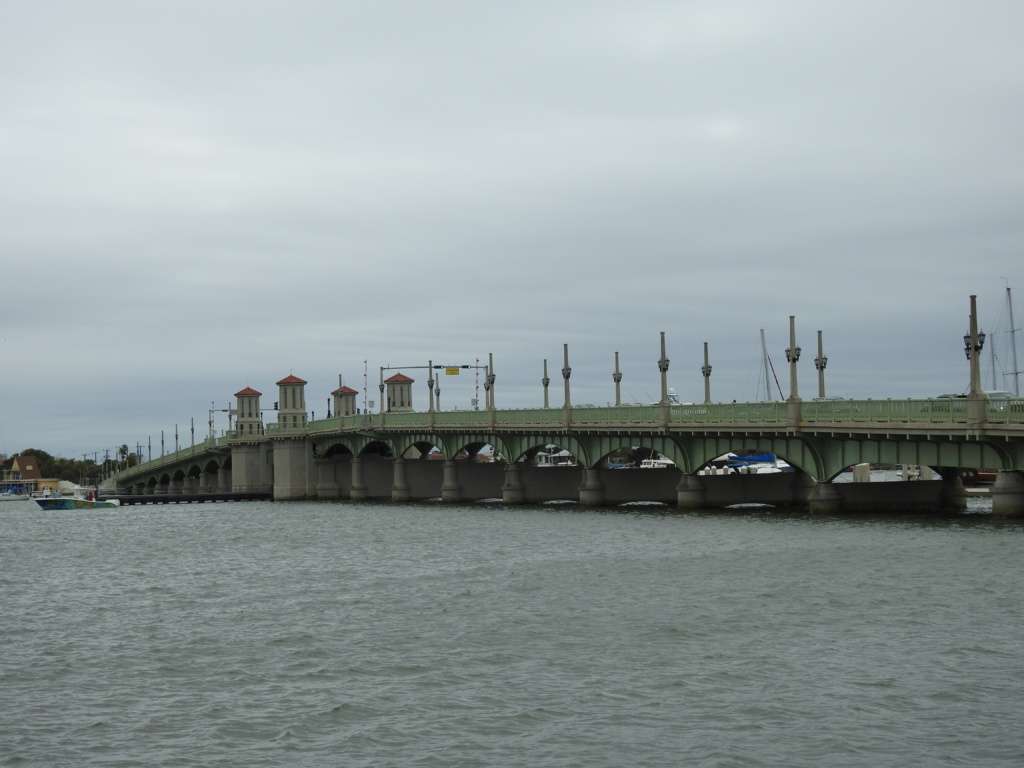Founded in September 1565 by Spaniard Pedro Menendez de Aviles, St. Augustine is the nation’s oldest city. It’s Spanish heritage is still evident in its architecture, from the Castillo de San Marcos, a Spanish Colonial landmark, to the original Ponce de Leon Hotel, a Spanish Renaissance Revival masterpiece. Although best known for its Spanish-style buildings featuring red clay terra cotta and ornate trimmings, the city of St. Augustine has a varied and unique architectural heritage that has been remarkably well preserved.
When touring the city, the first architectural landmark you will probably come across is the Old City Gates. After a British attack in 1702, the Spanish decided to enclose the entire city in walls. They were successful in fortifying the town and all future attempts to take the city failed. The walls lasted about 100 years but eventually broke down, although a few sections of it remain today. The northern wall, known as the Cubo Line, had a large gate that was built in 1808 to allow access to the city during the day. The gate’s coquina columns are still standing today and visitors who enter the city through its opening will find themselves in the heart of the old city on St. George Street.
St. George Street is the main thoroughfare in the old city. A pedestrian-only street, its shops, restaurants, and historical landmarks provide ample opportunity for exploring. Since we were visiting during Covid-19 and we knew this to be a tourist hotspot, we arrived early to beat the crowds. The shops weren’t open yet but we were more interested in wandering than shopping so it worked out perfectly.
One of the historic landmarks along St. George Street is the Oldest Wooden School House. Built more than a decade after the British burned the city to the ground in 1702, this one-room structure was originally a private home. In 1788, the house was converted to a schoolhouse. The house is made of red cedar and cypress wood and held together with wooden pins and iron spikes. Interestingly, the large chain that surrounds the house and bolts it to the ground was put there to protect the structure from hurricanes… and appears to have done its job well! The school house is available to tour for $5 but we opted not to go inside.
The street was such a cool place to wander and explore. There were neat things down alleyways and behind gates. We loved our sneak peak at the Spanish Garden, built in 1965 as part of the city’s 400th anniversary celebration.
We continued walking down St. George Street until we came to Cathedral Place, where the street opens to car traffic. We turned right and headed down Cathedral Place towards Flagler College, eager to check out the city’s defining architectural gem.
The city’s most recognizable building, the former Ponce de Leon Hotel is now Ponce de Leon Hall, the centerpiece of Flagler College’s campus. Henry M. Flagler, a railroad magnate and the co-founder of Standard Oil, built the hotel, which opened in January of 1888. It was the first building in the US made entirely of concrete (a mixture of cement, sand and coquina shell) and one of the first hotels with electricity, which was installed by none other than Thomas Edison. The Spanish Renaissance architectural style is seen throughout the interior and exterior of the building. Typical of the Gilded Age, the opulent mansion was decorated with such luxuries as stained glass windows, mosaics, painted murals, and extensive marble.
The hotel had a storied 79 year history, hosting celebrities, artists, presidents, and the wealthy escaping the cold northern winters. A year after its 1967 closing, Flagler College was established on the former hotel grounds. Touring the college is one of the most highly recommended activities in St. Augustine, not just for prospective students but for tourists as well. The tour highlights the architecture and history of the campus and is supposed to be both informative and highly entertaining. Unfortunately, due to Covid, tours were not available when we were there in April. In fact, we couldn’t even enter the campus and were limited to sneaking a peak through the gated archway.
While it was disappointing not to be able to walk around the campus, there was still much to admire from the outside. The architecture is amazing, the details stunning, and the landscaping beautiful.
After walking the perimeter of the college and peering in wherever we could, we headed back towards town for lunch. We got Mexican take-out and ate in the Plaza de la Constitucion. (It was cold!) Built in 1573, the plaza is the oldest public park in the country. There is an obelisk in the center to celebrate the Spanish Constitution of 1812 and a Civil War era cannon from the Castillo de San Marcos on each corner.
We continued east along Cathedral Place until we came to the water and the Bridge of Lions. Connecting St. Augustine to Anastasia Island, the drawbridge was constructed in the mid-1920s. Two Medici Lion statues flank the bridge. The marble lions were made in Florence, Italy as copies of the city;s famous statues in Loggia dei Lanzi.
We walked along the waterfront and stopped in the Pirate and Treasure Museum before heading back to the hotel for a quick rest before returning to the Castillo de San Marcos. We covered a lot of ground during our walking tour of the city and really enjoyed exploring, despite the unseasonably cold weather.
